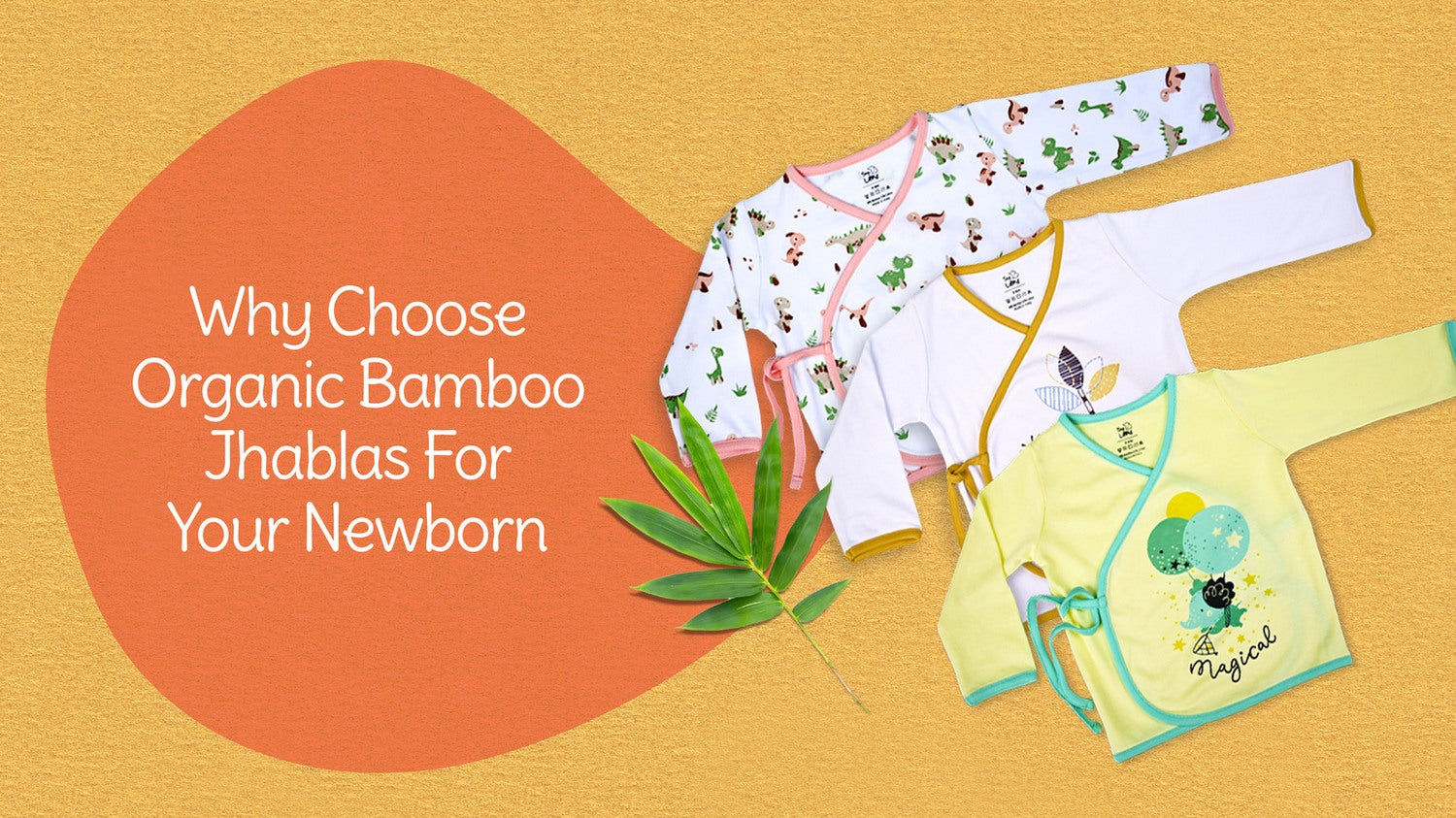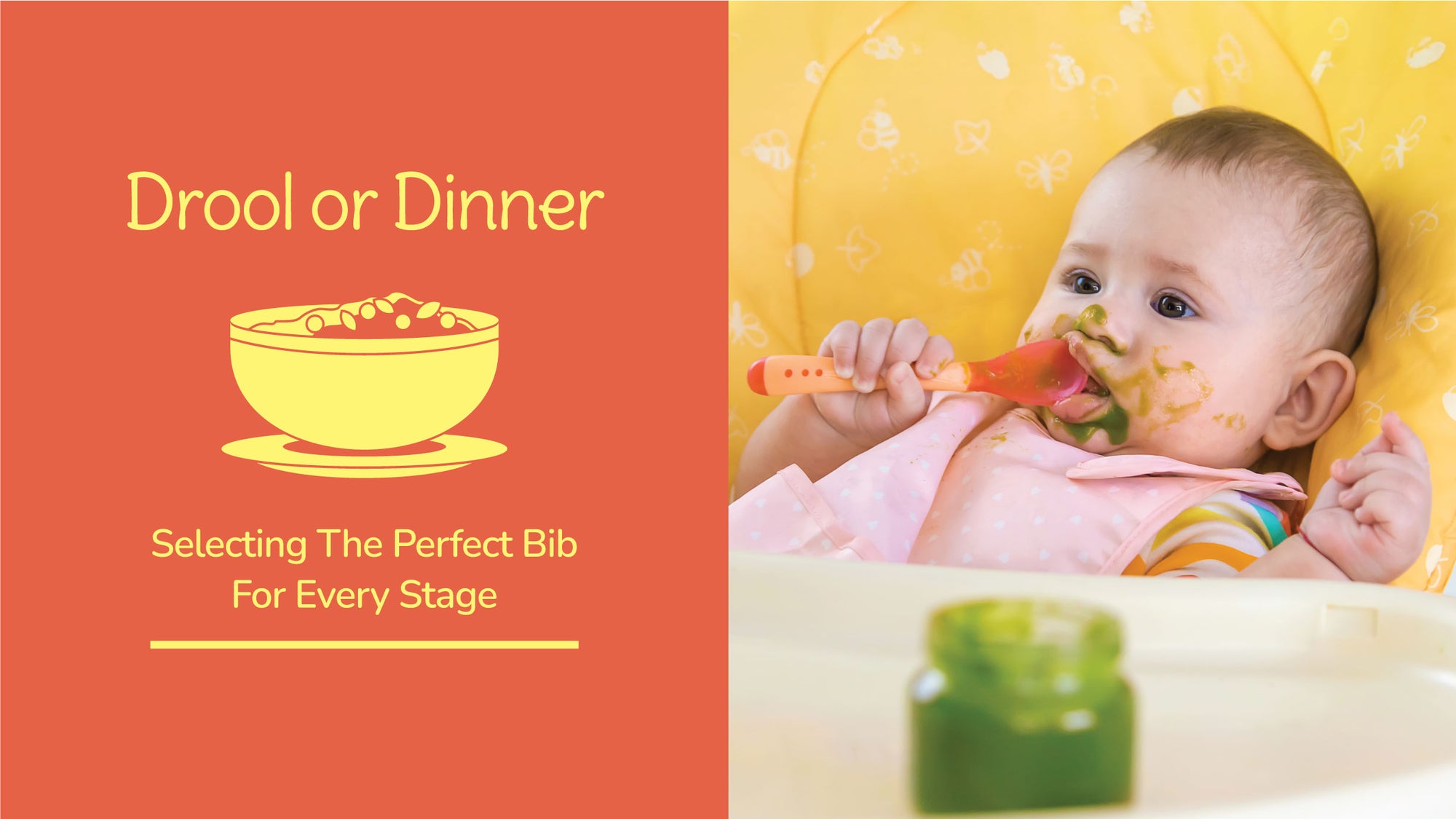We all know that taking care of your baby's fragile skin is one of your top priorities. Infants have the most precious and sensitive skin, and keeping it soft and healthy can sometimes feel like a full-time job. One of the biggest challenges that you might face is nappy rash – a pesky irritation that can cause a lot of discomfort for your tiny tot and worry you until you find a solution to relieve your baby's pain.
So, what exactly is nappy rash? Nappy or diaper rash, otherwise known as 'diaper dermatitis,' is that red, inflamed area on your baby's bottom that can make diaper changes a nightmare. Nappy Rashes occur when your infant's skin is constantly exposed to moisture, friction, and other irritants from diapers. But don’t worry, you’re not alone! Nappy rash is something many parents deal with, and there are ways to prevent and soothe it.
With so many alternative solutions, let us focus on how Tinylane, a bamboo baby clothing brand, aims to eradicate nappy rashes through its organic bamboo cotton nappies and dry mats. Tinylane is committed to making sure your baby’s skin stays as happy and healthy as possible. Our bamboo nappies and dry mats are designed with love and care to provide the gentlest touch for your baby's sensitive skin. With natural, hypoallergenic materials, our products help reduce irritation and keep your little one comfortable.
CAUSES OF NAPPY RASHES
Nappy rash, a common issue for many babies, can be caused by several factors. They are:
Friction
Friction is one of the main culprits behind nappy rash. When diapers rub against a baby's delicate skin, it can cause irritation and chafing. This friction is especially problematic when diapers are too tight or when the baby is moving around a lot. The signs that friction causes nappy rash include - redness and sore spots on the skin, particularly in the areas where the diaper edges come into contact with the skin.
Moisture
Moisture plays a significant role in creating an environment conducive to nappy rash. When a diaper is wet for too long, it can break down the skin’s natural barrier, making it more susceptible to irritation and infection. Wet diapers can contribute to skin irritation by keeping the skin damp and allowing bacteria and yeast to thrive.
This will result in reddish spots like allergies all over your boo's bum, resulting in itchiness, flaky skin, and sometimes draw blood if the sores are broken. Babies will cry incessantly and will refuse to be put down. Therefore, it’s mandatory to change diapers frequently to keep the area dry and reduce the risk of rash.
Irritants
Irritants found in diapers and wipes are another common cause of nappy rash. A lot of products available in the commercial markets contain chemicals, fragrances, and dyes, and these products can be harsh on your baby's delicate bum. These irritants can lead to inflammation and redness, exacerbating the discomfort associated with nappy rash.
Look out for tiny spots or allergies that can give way to boils and pimples filled with pus. They cause untold pain for your infant. Go for products that are devoid of any artificial fragrances/dyes that cause more harm than provide comfort for your boo.
Allergies
Allergies can also play a part in nappy rash. Identifying allergic reactions in your baby’s skin is crucial to addressing this issue. Common allergens in diapering products include certain fabrics, latex, and unwanted ingredients in wipes or creams. These fabrics, when used regularly and for a longer duration, can be very harsh on your boo’s skin. What occurs as a red, swollen, and itchy patch on the skin can spread to other places of your infant’s skin and cause the skin to peel off with dark scabs.
Yeast Infections
Yeast infections, also known as ‘Candida,’ are another possible cause of the nappy rash. These infections develop when the natural yeast that lives on the skin grows excessively in the warm, moist environment of the diaper area. Yeast infections can be distinguished from regular nappy rash by their appearance. They are often present as bright red pustules with defined edges and can include small red spots surrounding the main rash that will prolong for a long time if not treated with caution. These infections may require antifungal treatments, so consulting a pediatrician is often necessary.
SOLUTIONS FOR NAPPY RASH
Dealing with a nappy rash can be challenging, but with the right care, you can keep your baby's skin healthy and comfortable.
-
Choose the right diaper size
Make sure the diaper fits well – not too tight and not too loose. This helps in reducing friction and leakage. -
Use breathable diapers
Go for diapers that allow air circulation to keep the diaper area dry. -
Wash your hands
Germs gotta go! Wash hands before & after diaper duty.
Watch for signs of infection
Most diapers come with different colored lines, also known as wetness indicators, that highlight if the nappy is full. If the blue line is highlighted, it means that the nappy is full due to urine, and if the line changes to yellow, then the diaper has to be changed immediately as it may be due to lack of air circulation or your infant squirming in discomfort. This is a sign that indicates the appearance of rashes on your boo’s bum.
Frequent Diaper Changes
Dealing with a nappy/diaper rash can be challenging, but with the right care, you can keep your baby's skin healthy and comfortable. One of the most effective ways to prevent and treat nappy rash is by changing diapers frequently. Keeping your baby dry is crucial, as prolonged exposure to wetness can irritate their sensitive skin. Aim to change diapers as soon as they are wet or soiled, especially during the night when it’s easy for moisture to build up.
Gentle Cleansing Routine for Baby's Bottom
Gently clean your baby's bottom with warm water and a soft cloth or a fragrance-free wipe. Avoid rubbing too hard, as this can cause further irritation. After cleaning, make sure the area is thoroughly dried by patting gently with a soft towel. Allowing your baby some diaper-free time can also help the skin to breathe and stay dry. Proper cleaning and drying of the diaper area are also essential steps in managing nappy rash.
Use of Nappy Rash Creams and Ointments
Using nappy rash creams and ointments can provide a protective barrier on your baby’s skin, helping to prevent irritation and heal existing rashes. Look for creams that contain zinc oxide or petroleum jelly, as these ingredients are particularly effective in creating a barrier against moisture.
Apply a thin layer of the cream during each diaper change, especially before bedtime or any prolonged period without a diaper change. This not only helps in treating the rash but also in preventing it from coming back. If the rash doesn’t improve or gets worse, consult your pediatrician for further advice.
TINYLANE’S BAMBOO COTTON NAPPIES
When it comes to your baby's sensitive skin, Tinylane's bamboo nappies are a game-changer. Bamboo is naturally gentle on the skin, making it an ideal choice for babies prone to irritation and nappy rash. Made from soft, natural bamboo fibers, these nappies are perfect for keeping your little one comfortable and rash-free.
HOW DO TINYLANE’S BAMBOO NAPPIES HELP BABIES
Bamboo nappies have a myriad of uses. By choosing to switch from conventional store-bought diapers to organic bamboo-made nappies, you're not only giving your baby the best care but also supporting a more sustainable and environmentally friendly option.
|
Benefit |
Description |
|
Gentleness on Skin |
Bamboo fibers are naturally soft and hypoallergenic, reducing the risk of irritation and rashes for babies with sensitive skin. |
|
Reduced Risk of Diaper Rash |
Bamboo has natural moisture-wicking properties, keeping your baby drier and minimizing the chance of diaper rash. |
|
Chemical-Free |
Unlike traditional diapers, bamboo nappies are often free of harsh chemicals like chlorine, fragrances, and phthalates. |
|
Super Absorbent |
Bamboo can absorb up to 70% more moisture than cotton, keeping your baby comfortable for longer stretches. |
|
Breathable |
Bamboo allows for better airflow, preventing discomfort and overheating. |
|
Eco-Friendly |
Bamboo is a fast-growing, renewable resource that requires less water and pesticides compared to cotton. |
One of the key benefits of using bamboo nappies is their ability to reduce friction. The smooth, silky texture of bamboo fabric means less chafing and rubbing against your baby's delicate skin.
Additionally, bamboo's natural moisture-sponging properties help keep your baby dry by quickly drawing wetness away from the skin. This helps maintain a dry environment, significantly reducing the risk of nappy rash and discomfort.
|
Feature |
Tinylane's Bamboo Nappies |
Typical Store-Bought Diapers |
|
Material |
Bamboo & other natural materials |
Primarily plastic & synthetic fibers |
|
Absorbency |
High |
Moderate to high |
|
Breathability |
Excellent |
Varies, often less breathable |
|
Skin-Friendliness |
Very gentle, hypoallergenic |
May cause irritation in some |
|
Environmental Impact |
Lower |
Higher |
|
Biodegradability |
Yes (bamboo component) |
No |
|
Cost (per diaper) |
May be higher initially |
Lower |
|
Long-Term Cost (reusability) |
Lower |
Higher |
|
Comfort |
Very soft & comfortable |
Can be stiff & less comfortable |
TINYLANE’S DRY MAT FOR INFANTS
Changing diapers and nap times are a constant in a parent's life. But what if you could make these experiences a little less messy and a lot more comfortable for your little one? That's where Tinylane's Dry Mat comes in!
Dry Mats, otherwise known as Quick Dry Sheets are specially designed mats that act as a barrier between your baby's delicate skin and moisture. It's made with super absorbent materials that wick away wetness, keeping your baby feeling dry and comfortable.
BENEFITS OF USING A DRY MAT DURING DIAPER CHANGES AND NAP TIMES
Tinylane's Dry Mat offers a bundle of benefits that make diaper changes and nap times easier and more enjoyable for both you and your baby.
|
Benefit |
Description |
|
Keeps baby dry and irritation-free |
Super absorbent core wicks away moisture |
|
Comfortable surface for baby |
Soft, gentle material |
|
Protects changing pad or sheets from leaks |
Waterproof backing |
|
Machine washable for easy cleaning |
Hassle-free cleaning |
REAL-LIFE USE CASES AND FEEDBACK
Parents love Tinylane's Dry Mat for its convenience and effectiveness. Here's what some real moms and dads have to say:
"This mat is a lifesaver! No more leaks soaking through due to multiple diaper changes. Plus, it's so soft and gentle on my baby's skin." - Shweta M.
"Diaper changes get faster with Tinylane Dry Mat's absorbent power.. I just toss it in the wash with the rest of the baby laundry, and I'm good to go!" - Banu R.
HOW TINYLANE’S DRY MAT IS DIFFERENT FROM OTHERS
|
Feature |
Tinylane's Dry Mat |
Store-Bought Dry Mats |
|
Absorbency |
Superior absorbency to keep baby dry |
Absorbency can vary |
|
Material |
Soft, gentle material for baby's comfort |
Material quality can vary |
|
Waterproof Backing |
Yes, protects your changing pad or sheets |
May not have a waterproof backing |
|
Washability |
Machine washable for easy cleaning |
Washability may vary |
|
Durability |
Made to last through countless diaper changes |
Durability can vary |
ADDITIONAL TIPS
While Tinylane's Dry Mat is a fantastic tool for keeping your baby comfortable during diaper changes and naps, there are other things you can do to promote healthy, irritation-free skin:
Using Hypoallergenic and Fragrance-free products
Your baby's skin is very soft and sensitive. Opt for gentle, hypoallergenic, and fragrance-free products whenever possible. This includes lotions, soaps, and wipes. Look for terms like "free of sulfates," "free of parabens," and "fragrance-free" on labels.
Ensure proper diaper fit
A diaper that is too loose can leak, while one that is too tight can cause friction and irritation. Check for a snug fit around the legs and waist without being constricting. You should be able to slip a finger between the diaper and your baby's skin.
Allow diaper-free time for the skin to breathe
Whenever possible, let your baby go diaper-free for short periods each day. This allows their skin to air out and can help prevent diaper rash. Lay your baby down on a waterproof mat during diaper-free time to avoid any mess.
CONCLUSION
No parent should have to navigate the constant worry of diaper drama. By understanding the causes of diaper rash and yeast infections, coupled with a proactive approach to prevention, you can create a calmer and healthier environment for your little one.
Remember, prioritizing your baby's comfort with gentle products and frequent diaper changes goes a long way. For an extra layer of protection and peace of mind, explore diapers and changing solutions like Tinylane's Bamboo Diapers and Dry Mats. With their focus on breathability and comfort, they can help keep your baby's delicate skin happy and healthy. So, breathe easy, tackle those diaper changes with confidence, and enjoy the precious moments with your little one!



